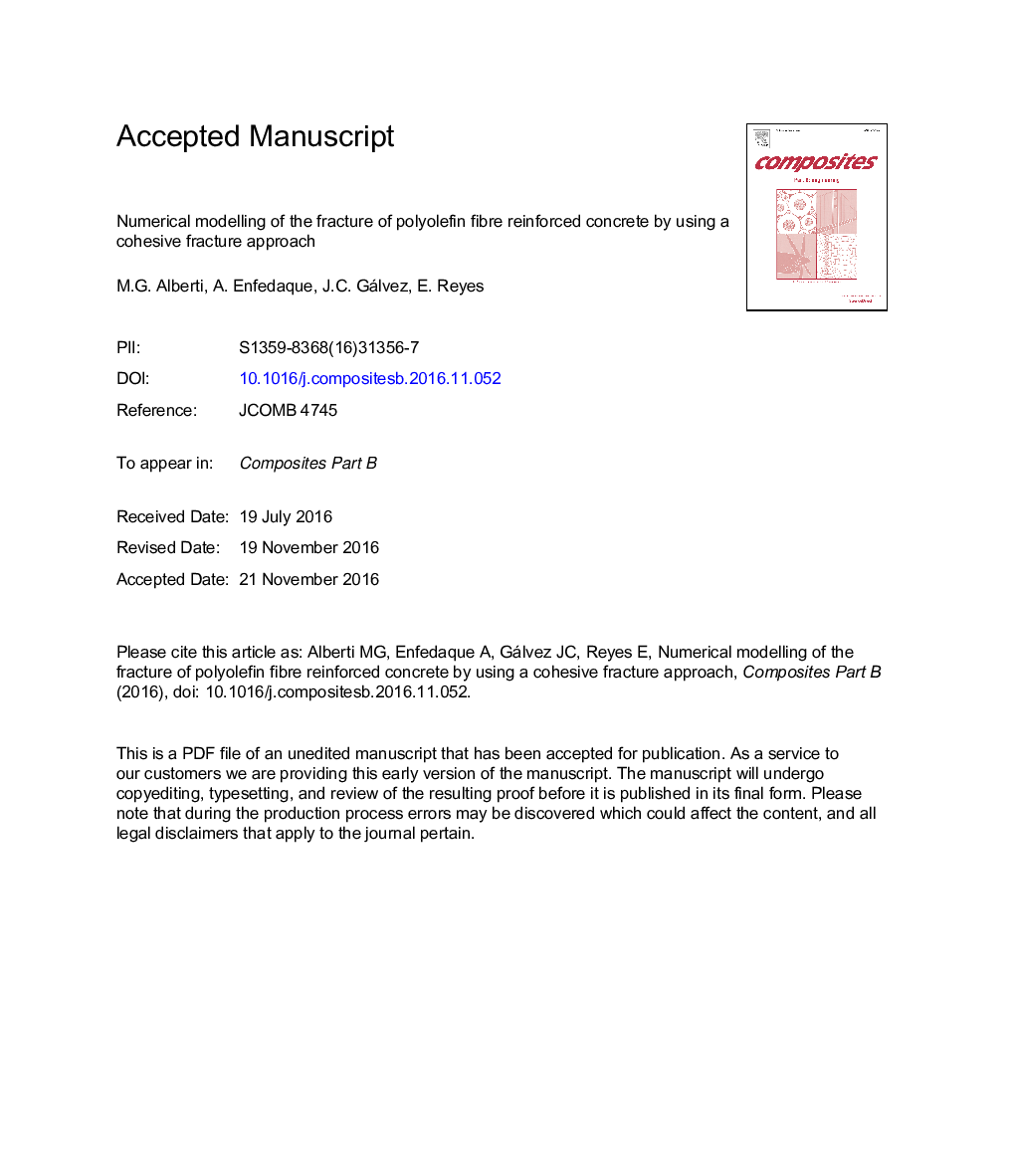| Article ID | Journal | Published Year | Pages | File Type |
|---|---|---|---|---|
| 5021523 | Composites Part B: Engineering | 2017 | 47 Pages |
Abstract
The recent generation of polyolefin-based macro-synthetic fibres have shown to meet the requirements of the standards for structural use. Therefore, polyolefin fibres have become an attractive alternative to steel reinforcement in both forms of fibres and bars. The main advantages of polyolefin fibres rely on chemical stability and lower weights for analogous reinforcements. However, the constitutive models proposed for structural design issues are still based on steel fibre-reinforced concrete. In this study, a numerical model, based on the cohesive fracture approach, is proposed for modelling the fracture processes of macro-polymer fibre reinforced concrete (PFRC). The model has been successfully used when applied by the authors to plain concrete and even non-isotropic cohesive materials. In this work, it is extended to PFRC by means of an adapted tri-linear softening function that has been justified by experimental evidences. Using the proposed model experimental PFRC fracture test results supplied by the authors have been reproduced with remarkable accuracy. The study proposes constitutive relations for PFRC with several dosages, applicable and adaptable for future modelling and structural design. This successful approach provides not only a breakthrough in the existing structural models applied to PFRC but also widen the understanding of the material behaviour subjected to fracture under Mode I.
Related Topics
Physical Sciences and Engineering
Engineering
Engineering (General)
Authors
M.G. Alberti, A. Enfedaque, J.C. Gálvez, E. Reyes,
